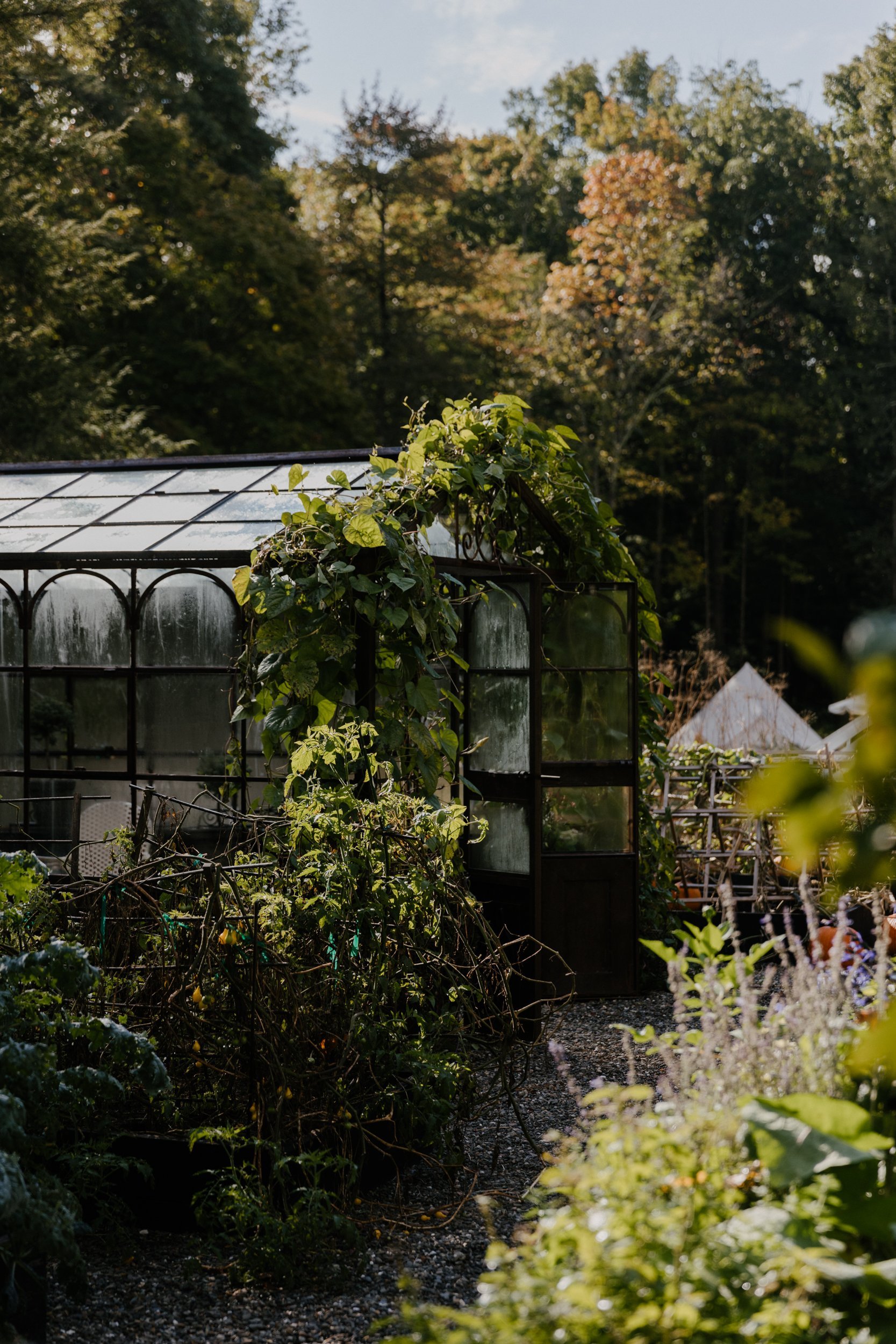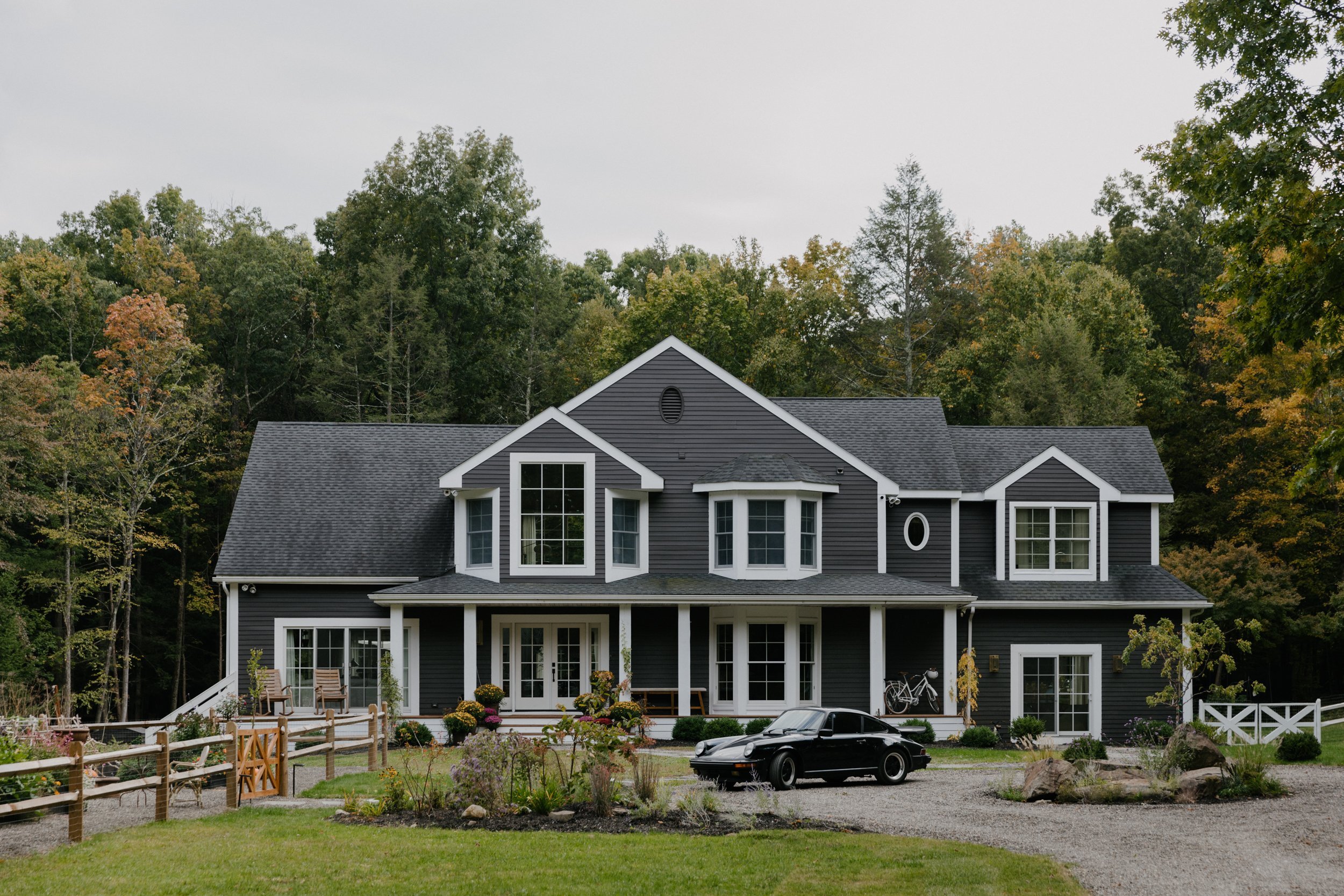When it comes to eco-friendly living you may think that you need to sacrifice style or convenience to adopt a more sustainable lifestyle. That’s far from the case. There are a lot of easy changes you can make that do good for the environment while supporting your health and well-being.
In this post, we’re showing how you can have the best of both worlds and live a beautiful eco-friendly life. Keep reading for our expert advice!

What Is Eco-Friendly Living and What Are the Benefits?
The term “eco-friendly” is everywhere right now. Chances are you’re already familiar with the meaning, but since it’s used so much it’s worth defining what eco-friendly living is and what the benefits of adopting a sustainable lifestyle are.
Eco-friendly living (also known as sustainable or green living) means being mindful of your impact on the environment through your lifestyle, routine, and habit decisions. So many aspects of our daily life have negative environmental effects including methods of transportation, home products we use, and what we consume.
Adopting a sustainable lifestyle is not only being mindful of that impact but also making lifestyle changes to reduce your carbon footprint.
A second component of eco-living is that many traditional products affect our indoor spaces, bodies, and health. Green products focus on natural, non-toxic ingredients to create healthy environments that support our well-being.

7 Eco-Friendly Ways to Live Beautifully
You can incorporate eco-friendly choices in nearly every aspect of your life. We’re reviewing all the ways you can live more sustainably and beautifully below. So that you’re not only helping the environment, but you’re also supporting your health and happiness.

Create an Eco-Friendly Home
The indoor spaces we inhabit have an impact on our health and the environment. From a health perspective, you’ll want to consider things like air quality and non-toxic materials. From an eco perspective think about your water and energy use and everything inside your home.
When building, renovating, or updating your home, it’s important to incorporate sustainable practices. Consider things like
- Using eco-friendly and non-toxic materials
- Ensuring good ventilation and insulation
- Maximizing energy efficiency
- Incorporating natural light
- Including vintage, upcycled, or recycled products and furnishings
- Native or drought-tolerant landscaping
Installing EnergyStar and WaterSense appliances that meet strict EPA requirements will help you use less energy and water while also lowering your utility bills. Also, consider utilizing solar energy to take advantage of sustainable energy resources.
Shopping for vintage or upcycled home goods is another way to reduce your carbon footprint while finding stylish and unique items for your home. Online shops like Charish and 1stDibs have beautiful collections of one-of-a-kind pieces. Or check out your local vintage boutiques and markets.
Designing an eco-friendly home both inside and out is one step to developing a sustainable and beautiful lifestyle.

Embrace Sustainability in Your Daily Life
Along with creating a greener home, think about how your daily routines and habits have an impact on the environment. Seemingly minor changes add up to make a significant impact. Our tips for living sustainably include
- Avoid single-use items, opt for reusable options instead
- Recycle
- Support local farmers
- Shop local businesses
From plastic packaging to shopping bags, bottles, and containers — single-use plastics are ubiquitous in our daily life. They are a massive contributor to throw-away culture and a big pollutant. Recycling helps but sadly the vast majority ends up in a landfill or contaminating our environment. Globally only 9% of plastic waste is recycled while 22% of that is mismanaged (OECD).
When looking for reusable products over traditional paper or plastic ones consider:
- Microfiber cleaning cloths
- Cloth dishtowels
- Cloth napkins
- Glass storage containers
- Reusable spray bottles
- Silicone storage bags
- Reusable shopping bags
- Biodegradable sponges
Along with reusable items, shopping locally is another way you can lower your carbon footprint. Farmers’ markets are a great way to learn about local farmers and vendors. Though it’s more convenient to buy online, shopping from local stores and boutiques reduces carbon emissions from shipping and transport while supporting the local economy.

Practice Mindful Eating
Another important lifestyle change is mindful eating. Sustainable eating habits not only consider the environmental impact of the food we consume but the effect on our health as well. Consider changes like
- A plant-based diet — eating meat has a higher environmental impact, and being vegetarian is great for your health.
- Avoid processed foods — they lack nutritional value and often have high levels of added sodium, sugar, and fat.
- Grow fruits and vegetables at home — so you know exactly where your food comes from and what’s in it. There are also no carbon emissions from transport.
- Composting — to reduce food waste and fertilize your yard.
- Conscious meal prep and planning, and freezing leftovers — helps reduce food waste.
- Embrace seasonal foods — so you’re not buying off-season produce that had to travel from across the world to get to your grocery store.
With a diet of rich fruits, veggies, whole grains, and healthy fats, vegetarians tend to have a lower risk of heart disease, cancer, and chronic illnesses (WebMD). But if you’re not ready to give up meat altogether, cutting back on red meat and adopting a Mediterranean diet is a healthy way to go.
Incorporating just a few of these mindful eating changes into your lifestyle can go a long way.

Be Aware of Consumption and Minimalism
As we touched on before a problem we’ve created that has negative effects on the environment is throwaway culture. Again think about single-use items or throwing things away after using them for a short time. In the US, the average person produces almost 5 lbs of trash each day which contributes to environmental pollution (EPA). That’s why it’s good to adopt minimalist and mindful consumer habits to reduce waste. Some things you can do are
- Embrace a minimalist lifestyle and buy only what you need, getting rid of excess and clutter
- Go for quality products that are made to last, so you don’t need to replace them after a year or two
- Donate, upcycle, or recycle things you no longer need, instead of throwing them away
- Buy from eco-conscious and sustainable brands, so you know that your dollars are helping offset harmful environmental impacts
Consumer culture is a big problem. Getting into the mindset that less is more, reducing waste, and living minimally can positively affect our planet and your well-being.

Consider Sustainable Fashion and Beauty
The same mentality of being a mindful consumer can translate to the beauty and fashion products you buy. Always choose quality over quantity and consider things like
- Shop from eco-friendly fashion and beauty brands
- Purchase vintage clothing
- Buy refillable beauty products
- Try DIY beauty recipes
Vintage clothing is so chic and usually great quality. For some great vintage finds, we recommend Luxury Garage Sale, What Goes Around Comes Around, Farfetch, or KeepEarthVintage and RetroRhapsody on Etsy. And of course, don’t forget to peruse your local vintage shops.
The best beauty brands use all neutral ingredients, without any toxic chemicals, so why not experiment with your own concoctions? That way you’ll know exactly what’s in it, taking out the guesswork. Try some of these natural skincare recipes from Good Housekeeping.

Connect With Nature and Engage in Outdoor Activities
It’s been well-documented that staying physically active is good for our health, but being active outdoors is even better for both our bodies and minds (EveryDayHealth). So when it comes to exercise, switch up your gym routine by getting outside instead. Some outdoor activities to try are
- Gardening
- Yoga or meditation
- Hiking
- Walking or running
- Biking
- Tennis
- Swimming (or other water sports)
Some of the benefits of being active outdoors include getting — vitamin D, fresh air, and more mental stimulation. Spending time outside in nature can improve your overall well-being while fostering an appreciation for the environment.

Adopt Eco-Friendly Travel and Transportation
Last but not least think about how your transportation methods affect the environment. The transportation sector is another very well-documented source of negative environmental impact because of the carbon emissions released by vehicles. Here are some alternatives to consider
- Bike or walk
- Use public transportation
- Carpool
- Invest in an electric vehicle

We hope you enjoy these lifestyle tips and feel inspired to embrace eco-friendly changes. If you’d like to upgrade your home to be more sustainable and environmentally friendly, then AHG Interiors can help. We’re experts in eco-friendly home design, inside and out, and will customize your home so that it’s beautiful, functional, and friendly to the environment. Contact us today to get started!




